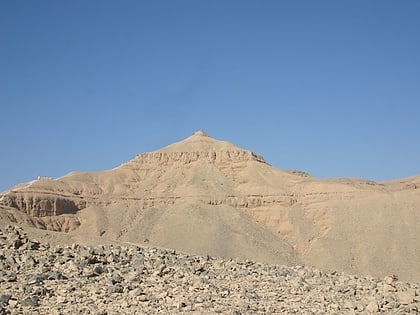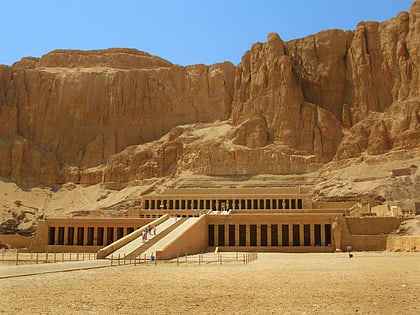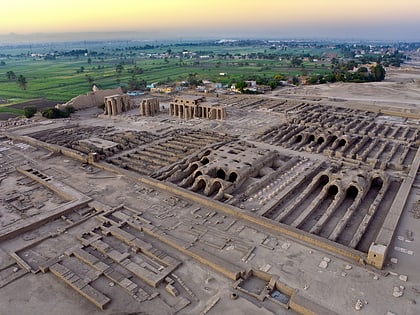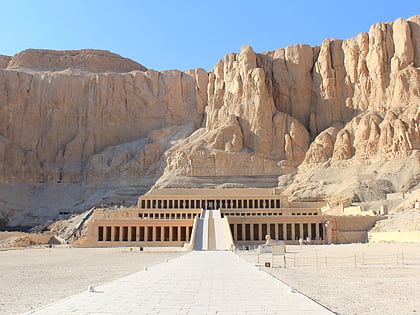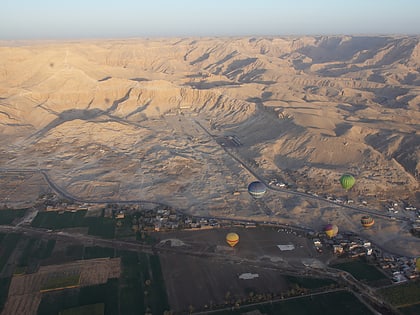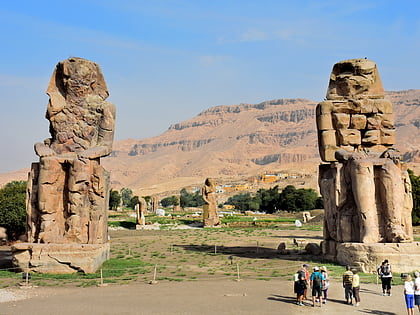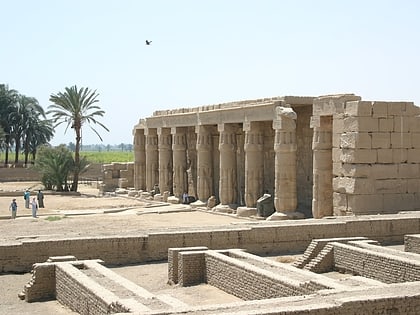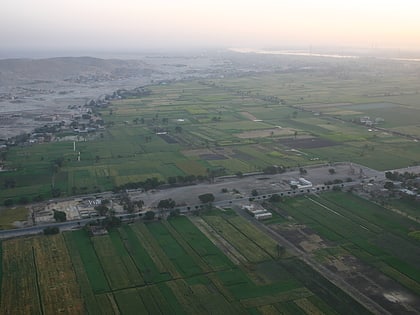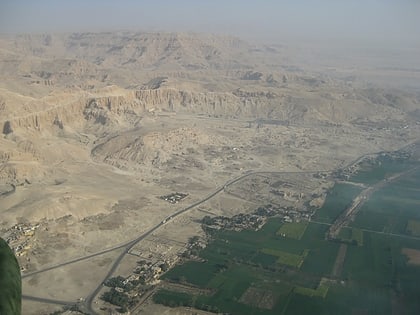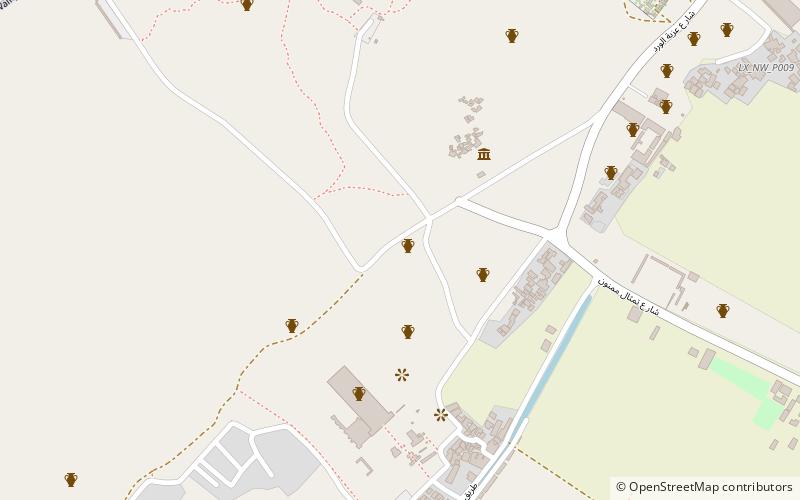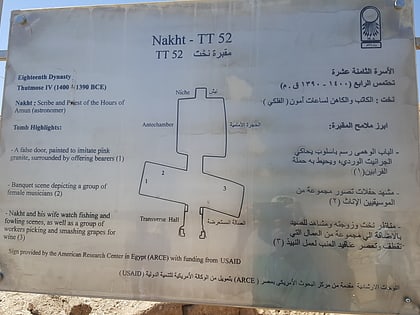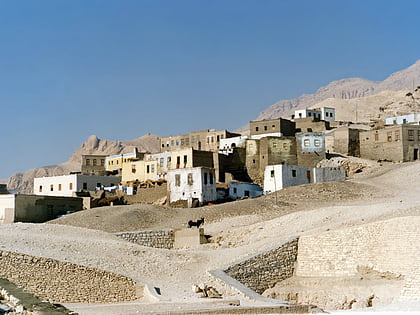Dra' Abu el-Naga', Luxor
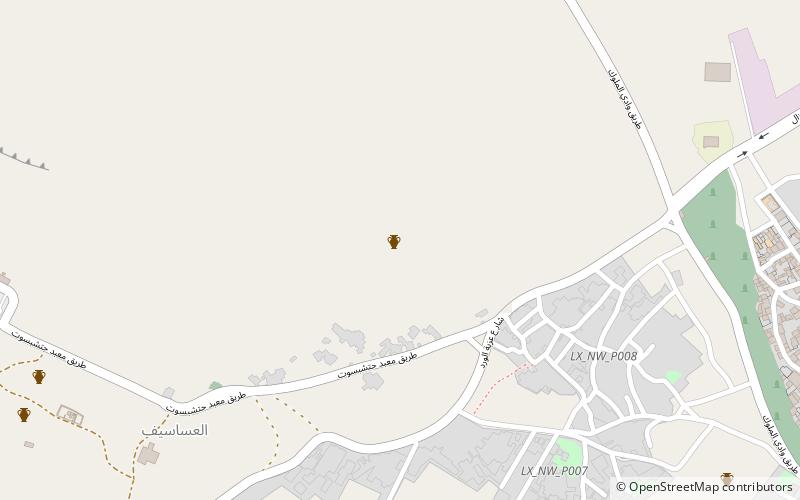

Facts and practical information
Dra' Abu el-Naga' is a significant archaeological site located on the west bank of the Nile in Luxor, Egypt. This ancient necropolis serves as the final resting place for many of Egypt's nobles and court officials from the New Kingdom period, particularly the 17th to early 20th Dynasties.
The area is characterized by its cluster of rock-cut tombs embedded in the hillside, offering a window into the architectural and artistic styles of the time. The tombs at Dra' Abu el-Naga' are known for their intricate wall paintings and reliefs, which depict scenes from the daily lives of the deceased, as well as religious texts and funerary rituals. These artworks are not only aesthetically impressive but also provide valuable insights into the beliefs, customs, and history of the ancient Egyptians.
One of the most notable tombs at Dra' Abu el-Naga' is that of Roy, a royal scribe, which dates back to the 20th Dynasty. Another is the tomb of Shuroy, a wab-priest during the reign of Ramses II. These tombs, among others in the site, have been the focus of much scholarly research and conservation efforts.
Excavations and studies continue to reveal more about the layout of the necropolis and the identities of those buried there. The site remains an active area of interest for Egyptologists and archaeologists striving to uncover more about Egypt's past.
Dra' Abu el-Naga' – popular in the area (distance from the attraction)
Nearby attractions include: Mortuary Temple of Hatshepsut, Ramesseum, Deir el-Bahari, Valley of the Kings.
